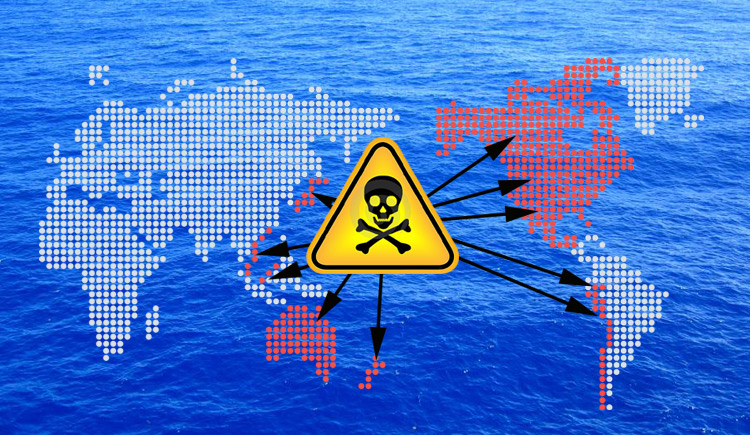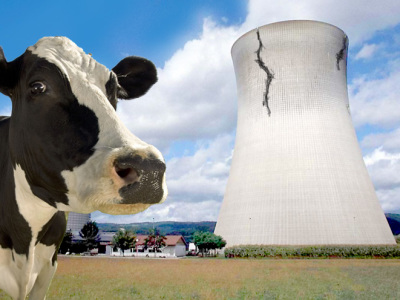Mythical TPP Benefits: The Rules-of-Origin
In an age where people are more skeptical than ever about where their food or goods come from, should we really make it more confusing, and more opaque?

Free trade agreements are technically a big fat lie, or at least a big deception. They all include tariff schedules or import limits, even for products that meet the criteria of the treaty. On the surface, this seems as simple as checking things off a list, but it’s the numerous variances and exceptions that make this complicated. Beyond that, there are a number of details that enable corporations to cheat, and bend import restrictions. As a rule of thumb, any time you give a corporation the power to exploit a lower wage workforce, they will.
Generally, there’s two main problems with trade deals in general, as negotiated that is. The first relates primarily to trade deficits, where one country is buying a greater value of goods from another, creating outflows of capital. The second is that trade deals are increasingly written to appease industry lobbies, or working groups, that have multi-nationalized beyond the point of loyalty to their home country. Each create an environment that encourages investment into the poorest nation, siphoning economically productive cash from the wealthiest nation, with very few mitigating factors now that intercontinental shipping is so inexpensive.
The logical solution to a trade deficit is increasing tariffs to incentivize consumers to buy locally produced goods. A free trade deal then runs precisely counter to that notion, offering only the possibility of lowered prices in return. Which for a lot of consumers sounds like a reasonable proposition, since lower cost luxuries are what have enabled the lower wage classes to improve their standard of living. However, the commoditizing of luxuries has specifically had darker two side effects, one being that expectations of improvements became ingrained in consumers minds, the other is that very little pressure is placed on employers to increase wages.
Low-cost commodity luxuries hide true inflation from consumers. Every year may not feel like progress, people may not feel like they are getting ahead in life, but they don’t feel far enough behind to worry. Their purchasing power hasn’t visibly diminished, as miniaturization and automation continued to bring new advancements within affordable range. So employee wages have stagnated for nearly 4 decades in North America, not far from the poverty level, further numbed by the equality movement driving housewives into jobs. Where’s the outcry?
Obviously the rise in free trade deals isn’t solely responsible for depressed wages, but it is very much the enabler.
Who’s chair leg is it anyway?Optimally, only raw materials that can’t be obtained locally would be imported, since there should be no circumstance that a local equivalent should cost more. Then following the importation of the raw material, such as hardwood lumber, brass, sulphur, etc, the local industry would convert it into a higher tier of value-added goods, like a box, a clock, or explosives respectively. Sadly this isn’t the case.
In a case where both countries produce the same raw materials, it comes down to who subsidizes their local producers the most, and who has the higher net production cost. This kind of resource production is also highly seasonal, and entirely demand driven, further complicating investment choices. A medium sized manufacturer that can’t forecast a regular delivery schedule for bulk orders might choose to source locally at a higher cost, because they have a faster turnaround time between order and delivery, an advantage that ordering overseas at a discount can’t overcome. The futures markets are also highly manipulated, often at the mercy of currency exchange as well, making commodities a tough business on a good day.
Let’s then move beyond the resource trade, to the value-added sectors, the post processing level. Here the most common basis of trade discrimination will be in percentages. Limits based on value. Under the NAFTA, approximately 62% of a passenger car must be produced in a NAFTA signatory country, of which there are only a few. This means the wholesale costs of every component are tallied up in two categories, those that fall under Annex 401 requirements, and those that don’t.
Under TPP, that minimum limit falls to 45% (optimistically) while including a large number of third-world nations into the zone. Of the costs paid for components, 45% must be made in the TPP zone, and 55% can be sourced elsewhere like China, which isn’t a TPP member nation. This introduces another immediate problem, disappearing valuations distorting the total. We need to focus on the qualifying parts limit to understand the problem. If we are discussing a dollar a limit, this can obviously be skewed by even a single line item.
Say we have a vehicle with a bill of materials totalling $23095, ostensibly $10393 of that will have to have been paid for parts supplied by TPP signatory nations, which could mean spending $11004 on nearly half of the vehicle, or nearly none of the vehicle. It all depends on cost breakdown, and even if the prices for TPP produces parts remains the same, if the external prices of non-exempt parts falls sharply, the bill of materials is decreased. A decrease in BOM then yields a higher relative percentage of qualifying parts, which then allows even more of the vehicle to be made elsewhere. Giving TPP countries even less ability to raise production costs, such as giving workers more benefits or higher pay, versus non-TPP countries.
The inverse is also true. If for whatever reason production costs rise for a given component, such as a transmission assembly, then the subsequent dollar increase to the qualifying costs, can be offset by purchasing more non-qualifying parts of the same dollar amount. Here again the dollar amount is the sticking point, it’s a value that doesn’t distinguish between labour and materials cost. Offsetting $34 to non-TPP producers can mean $34 in fasteners that are made with automated processes employing few workers in TPP countries already, or it can mean offsetting a labour intensive set of mouldings. Thus, labour dollars flow out.
It’s a competitive disadvantage engineered to permanently depress wages, which is exponentially worse with lower limits.
Bait and SwitchThere was a recent study of the livestock producing industries in the United States, where they found meat packagers, who’s job it is to clean and package meat, were sending the raw meat to places like China to be cleaned and packaged, then importing the finished goods to be sold locally, proudly labelled as originating in the USA. Clearly a perversion of the process, since they are exporting the value-add jobs overseas, while the profits are disbursed to a small number of owners and investors. Republicans in the United States call these business owners “job creators” and deserving of tax cuts, remember that.
Then there’s the matter of tonnage. Many containers of chicken are sent to China to process, and many containers of neatly packaged chicken pieces come back. The chicken comes back duty-free, because the Country-of-Origin applies, which despite the oriental vacation remains America. Do you think Customs and Border Protection knows exactly how much of the returning meat came from the United States, or territories thereof, and whether more Chinese chickens were added?
The standard rule for this type of boomerang export-import trade between the United States and Canada is based on product weights. That is, if you export 800 tons of whole chicken, to be processed into pure meat chunks for chicken soup, the border agency would give you a return quota of 400 tons, duty-free. So by this simple weigh limit, they can skip costly and imprecise investigations into each load. You then might ask, well how would they know exactly how much was “lost” in waste? What if the frozen whole chicken was injected with water beforehand, only to return dehydrated? Do they measure the nominal density the chicken meat is supposed to be? Of course they don’t.
None of this guarantees the returning chicken is the same chicken either. You could be importing only the chicken breast, which doesn’t constitute 50% of the weight alone, allowing you to sneak in extra breast meat from other sources. Therefore you have a giant loophole for selling the drumsticks or wings to the exported country, while adding even more processed chicken breast to your import quota, from chickens that could have been raised on a landfill. What happens to all our food safety regulations? Could you really trust that your ISO 9001 certified factory with the impeccable record applies to your food?
In this way, a multi-national corporation can not only profit from it’s “waste”, it can save money on inferior product. Then, to rub more salt in your local farmer’s eye, it can bypass quotas as well. Clearly not a perfect solution, and maybe there isn’t one if you believe that the free-trade aspect is crucial, it becomes a much simpler equation if you incentivize companies to use local labour with tariffs. Let’s just say the inspectors are pretty sure there’s a lot of dubious Chinese chicken exploiting the agreement to the detriment of local producers.
It’s worth being reminded, that these are the kind of loopholes not available to small producers and packagers, it’s only the large corporations that get the benefits, the ones that don’t need it.
Word AlgebraEver since NAFTA, free trade agreements all have stipulations for what types of goods get the Saudi Prince treatment at customs, and which get pulled aside like terrorists. Naturally math is involved, and as we all know, you can prove anything with enough maths, even an impossibility. That said, NAFTA became a blueprint for it’s generation of trade deals, just like the TPP will be the blueprint going forward. Partly because it pushes the limits of public acceptance, and then forcefully locks that new anti-democratic limit in place for generations, very much like banning citizens from collecting rainwater.
Worse still, the TPP is meant to be a living document that can be further refined (ie. re-written) by the same vested interests, without requiring the ratification step, bypassing the will of the people in perpetuity. This together with “ratchet” clauses that prevent nationalizing vital infrastructure, or critical industry, once it has been privatized, just ensures a one way progression.
With a document 6000 pages or so long, written by the best industry lawyers, you can bet the devil is in the wording. The people who have been following the leaked draft texts have known what to expect, and have had time to digest the real meanings behind the agreements, but this isn’t necessarily true for the lawmakers who are set to ratify the treaty. We need to start a new discussion, not just public input, but real consultation with contract lawyers, specifically with the intent of finding the worst case scenario for every clause. We need to understand when a line uses “should”, and another line uses “shall”, that this is highly significant.
They say 40% of the world’s economy is riding on this deal, should we not give this 40% of the world’s scrutiny as well?
Leave A Comment
You must be logged in to post a comment.

